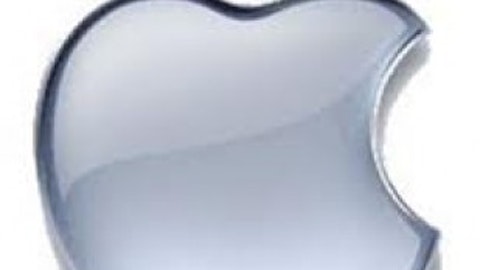Just yesterday, e-tail kingpin Amazon.com, Inc. (NASDAQ:AMZN) decided to get even more aggressive than usual. The company permanently slashed the price of its 8.9-inch Kindle Fire HD tablet and expanded country availability.

The larger version of its popular tablet can now be had for just $269 for a Wi-Fi only model, while the LTE-equipped model now starts at just $399.
| Model | New Entry-Level Price | Price Reduction |
|---|---|---|
| Wi-Fi | $269 | $30 |
| LTE | $399 | $100 |
Source: Amazon.
The change comes shortly after Amazon was offering a promotion last month with similar price points, but now the price changes are here to stay. Why the sudden change of heart?
A little white lie?
According to Amazon.com, Inc. (NASDAQ:AMZN) Kindle exec Dave Limp, the e-tailer has been able to decrease its cost structure alongside increased production volumes. Amazon has a habit of passing along cost savings to customers whenever possible throughout its business, and Limp maintains that this is just the latest example of that practice.
When Amazon.com, Inc. (NASDAQ:AMZN) offered the promotion last month, I instead hypothesized that the 8.9-inch Kindle Fire HD didn’t sell too well over the holidays, and that the company was stuck with a glut of inventory that it needed to clear out. The 7-inch model is still likely doing well at the tempting $199 price point, but the original entry-level price point of $299 for an 8.9-inch Wi-Fi model put it squarely against Apple Inc. (NASDAQ:AAPL)‘s iPad Mini.
For an extra $30, the iPad Mini is pretty compelling since it has higher build quality and a more robust app ecosystem, even if the Kindle Fire HD features a much better display. That seems to be a trade-off that many consumers were willing to make, since the iPad Mini is off to a strong start and expected to sell upwards of 55 million units this year.
History does not repeat itself
The price cut is in stark contrast to Amazon’s pricing strategy last year. The first-generation Kindle Fire was launched in September 2011, and Google Inc (NASDAQ:GOOG) launched its Nexus 7 in June 2012. The Nexus 7 was superior to the Kindle Fire in nearly every imaginable way, yet both devices were priced at $199. At the time, there weren’t many justifiable reasons to pick a Kindle Fire over the Nexus 7 since they were at pricing parity.
That was a whole nine months after launch, and Amazon’s component costs inevitably decreased over that time, yet it did not offer any type of price reductions. Fellow Fool Rick Munarriz entertained the idea of a $149 Kindle Fire after IHS Inc. (NYSE:IHS) iSuppli compiled a bill of materials for the Nexus 7, with the justified assumption that Amazon was facing a similar cost curve as Google Inc (NASDAQ:GOOG).
Amazon’s strategy has always been to sell hardware at or near cost, but it would be another three months until Amazon cut the first-generation model’s price to $169 when it launched the second-generation models.
What’s the difference? Why did Amazon feel it could wait three months last year before a competitive response but is now suddenly feeling generous? Weaker-than-expected sales are a possible explanation alongside inevitable cost reductions. If the shoe fits…
We don’t sell and tell
Investors will still be left guessing though for a definitive answer, since Amazon.com, Inc. (NASDAQ:AMZN) doesn’t report hardware sales or product mixes. It’s also not as if you can glean any information from Amazon’s inventory figures either, since the increase to $6 billion as of the end of 2012 has little to nothing to do with Kindle Fire inventory and everything to do with the whole largest-e-commerce-company-in-the-world thing.
Recipe for a price drop
The new pricing further distances the 8.9-inch Kindle Fire from the iPad Mini. We’re now talking about a $60 to $70 price gap, which makes Amazon’s tablet just a little bit more appealing to price-sensitive consumers.
| Tablet | Display Size | Entry Level Price |
|---|---|---|
| 8.9-inch Kindle Fire (Wi-Fi) | 8.9-inch | $269 |
| iPad Mini (Wi-Fi) | 7.9-inch | $329 |
| 8.9-inch Kindle Fire (LTE) | 8.9-inch | $399 |
| iPad Mini (LTE) | 7.9-inch | $459 |
Sources: Amazon and Apple Inc. (NASDAQ:AAPL).
Meanwhile, Google has also moved up-market into the larger-sized tablet market with the Samsung-built Nexus 10, which retails for $399.
Intensifying competition, weaker-than-expected sales, component cost reductions, and a disinterest in hardware margins are the perfect recipe for a 8.9-inch Kindle Fire HD price drop.
The article Amazon Gets Aggressive originally appeared on Fool.com and is written by Evan Niu.
Fool contributor Evan Niu, CFA, owns shares of Apple. The Motley Fool recommends Amazon.com, Apple, and Google. The Motley Fool owns shares of Amazon.com, Apple, and Google.
Copyright © 1995 – 2013 The Motley Fool, LLC. All rights reserved. The Motley Fool has a disclosure policy.

